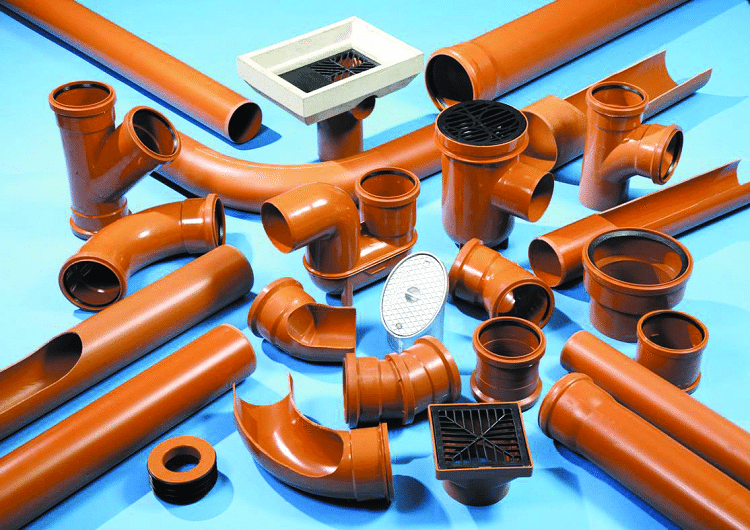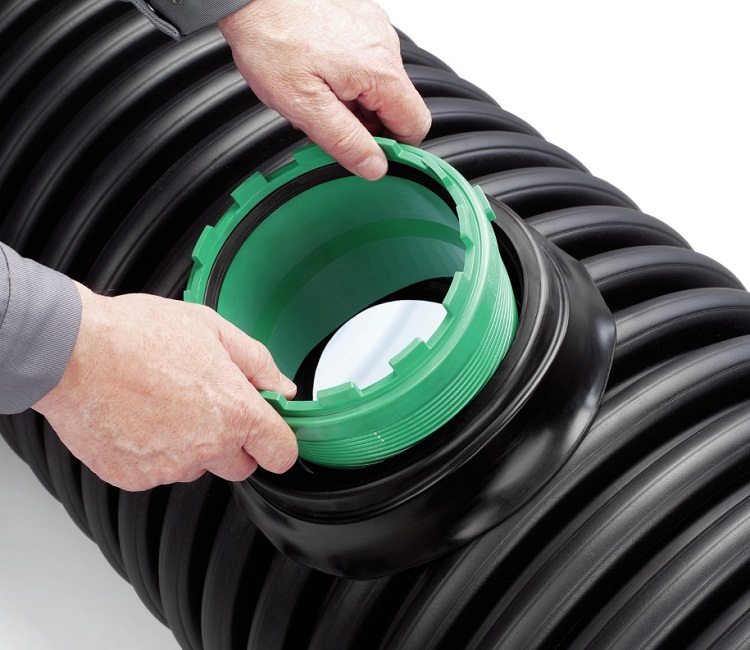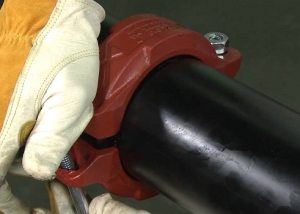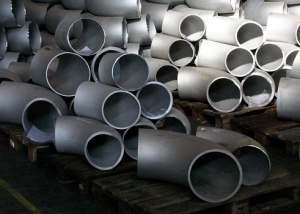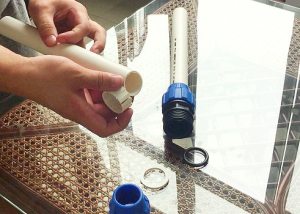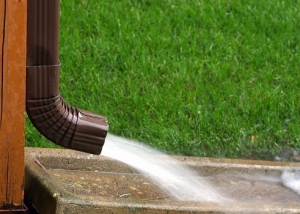The technology for designing and assembling sewer communications is constantly striving to achieve a higher level of improvement through the use of new materials that are superior in quality. The emergence of quality PVC pipes for sewage today, with a wide range of components, it has made it possible, without much labor and expense, to quickly assemble a sound sewer that will last for more than a dozen years. It is known that the effective operation of the drainage system relies on the laws of physics, so the main responsibility lies with the design and installation. Here, to help us, various connection elements have been created - fittings for PVC sewer pipeline (fittings).
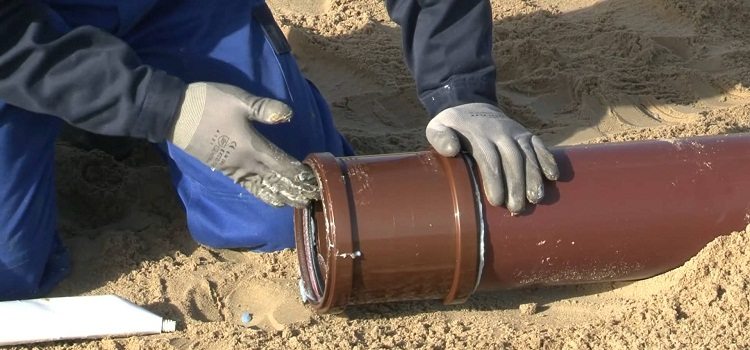
Using the types of fittings available on the market, sewer pipes can be connected easily and simply.
Content
Types of fittings for the installation of internal sewer systems
Fitting - parts due to which the docking assemblies, turns, branches are mounted, pipes of different diameters are connected into a single network. During wiring the presence of all kinds of fittings allows you to create complex forms of structures from direct components.
The fittings, as well as the pipes of the domestic sewage system, are made of gray PVC. At the moment, the following varieties of fittings are used in construction:
- coupling two-bell-shaped - a part connecting pieces of pipes of equal diameter, not having a bell, in one line without bending;
- sliding repair clutch - a part for eliminating emergency situations and various damages on the pipeline (leaks, cracks, breakdowns). Convenient for repair on the system site where you want to remove part of the damaged line;
- revision coupling - an element of connection with three inputs, the central entrance (hole) is equipped with a screw cap. By opening the lid, you can clean the clogged pipes. It is placed in a place where there is convenient access;
- compensation pipe - a pipe segment 17-25 cm long, on the one hand has an elongated bell, on the other - a smooth part that is attached to the pipeline by a coupling. Designed to increase the length of the pipes, replace the damaged area;
- an adapter between two pipes of different diameters, called a reduction - an eccentric sleeve, where the socket part goes under a large diameter, and the sleeve part under a small one;
- cast iron / plastic adapter - used for joining cast-iron sewers to plastic, has a bell-shaped inlet with a diameter for a cast-iron pipe and a sleeve;
- elbow or bend - curved at 15-90 degrees. a part with a wide choice of diameters for designing turns of sewer pipes;
- tee - y or T-junction used to connect one branch to the main pipeline. An additional inlet with a bell may have equal or smaller sizes;
- a cross - an element for connecting two branches to the main pipe in the same plane, and the diameters of the branches may be different from the diameter of the main riser;
- a two-plane cross - a docking unit in which two branches are connected from the left or right side perpendicular to the main pipe;
- a cover for blocking the end of the pipeline or a plug blocks the movement of drains;
- vacuum valve (aerator) - prevents the release of hazardous sewer gases into the room through the installed plumbing fixtures, due to rarefaction in the system, it is mounted at the top of the riser;
- exhaust umbrella - an element of aeration of the riser in the form of a stub with holes, prevents the entry of litter and precipitation;
- siphon - an element of the connection of the outlet and plumbing. Its curved shape creates a water trap that restrains the smell of effluents;
- clamp - pipe mounting hardware.
The connection of PVC fittings with pipes can be glue, welding (adhesive), threaded (drain with a small diameter, such as a sink) and using a rubber ring. Whatever type of connection is used, you need to remember that the joint is the most critical place in sewer installation. The work of the entire system depends on the quality of the fitting fittings, so you should carefully consider this issue or consult a specialist.
Shaped parts for internal sewerage are equipped with a rubber sealing ring, which during assembly of the network provides a reliable, tight connection. However, there are recommendations to strengthen this type of connection with silicone sealant to avoid drying out of the rubber. Sockets without a rubber layer are connected with glue. Hardening, the adhesive structure becomes similar to PVC with the same characteristics as pipes.
Before joining fittings, pipes and plumbing must be carefully secured to avoid disturbances in the assembly process and possible leakage.
Important! The adhesive joint is not used in places where sagging of the bends is possible.
Types of fittings for the installation of external sewer systems
Docking PVC elements of the external sewage, in order not to be confused, are made in orange (brown) color. They are still distinguished by durability, thickened walls, have a high stiffness class and large sizes. The main types of fittings coincide in both sewer systems, only the diameter changes. There are components specially made for the external system, these include:
- three-bell-shaped tee - provides the merging of three gadgets of smaller diameter into the main drain pipe of a larger circle;
- adapter between different diameters and pipe materials;
- check valve - prevents the circulation of effluents in the opposite direction due to clogging or overflow of the system. One valve is enough for the external sewage of a small private house, but not for high-rise buildings, where it can be installed only on a separate apartment;
- siphon with two elbows - a watertight connection included in the pipeline in front of the sink receiver;
- saddle - a part designed as a saddle with an inlet in the middle serves as a connection of an additional outlet to an already working system. The saddle is glued, clutching the main pipe, and its bell is connected to the branch.
A pressure sewer network with a pressure of 6-11 atm., Involves the use of a flange joint, that is, special fittings (mainly couplings) equipped with a rubber layer and a bolt coupler. The connection is distinguished by its special durability, protection against leakage, and the possibility of quick further replacement.
Sizes of fittings for sewer pipes
The manufacture of fittings is based on full compliance with the diameters of the pipes, which allows to achieve tight joints, and also meets certain standards. The sizes of PVC fittings are diverse, as are the options for assembling sewage systems.
Important! To reduce the pipeline to the desired length, only pipes, but not the connecting parts, can be shortened.
The most popular sizes of communication parts are presented in the table.
Table 1
| Name of fitting | Type of sewage | Working diameter mm | Possible junction angle, deg. | Length without bell, mm |
| Coupling | Int. | 32; 40; 50; 110 | — | 120-320 |
| Outdoor | 110; 160; 200; 250; 315; 400; 500 | — | 125-326 | |
| Audit | Int. | 50; 75; 110 | — | 167-184 |
| Outdoor | 110; 160; 200; 250; 315 | — | 184-500 | |
| Compensation pipe | Int. | 50; 110 | — | 170-250 |
| Outdoor | 110; 200; 400; 500 | — | 180-320 | |
| Adapter, reduction | Int. | 50/32; 50/40; 110/50 | — | 40-82 |
| Outdoor | 110/160; 16/200; 200/250; 250/315; 315/400 | — | 125-244 | |
| Elbow, bend | Int. | 32 | 45/15/30/90 | 15-25 |
| 40 | 45/15/30/90 | 30-47 | ||
| 50 | 45/15/30/90 | 50-76 | ||
| 75 | 45/15/30/67/90 | 81-93 | ||
| 110 | 45/15/30/67/90 | 93-190 | ||
| Outdoor | 110 | 45/15/30/67/90 | 93-190 | |
| 160 | 45/15/30/67/90 | 124-267 | ||
| 200 | 45/30/67/90 | 179-327 | ||
| 250 | 45/15/30/90 | 193-422 | ||
| 315 | 45/15/30/90 | 219-502 | ||
| 400 | 45/15/30/90 | 328-615 | ||
| Tee | Int. | 32/32 | 45 | 98 |
| 40/40 | 45/90 | 106-95 | ||
| 50/50; | 45/90/67 | 121-106 | ||
| 110/50 | 45/90/67 | 166-147 | ||
| 110/75 | 45/90/67 | 166-152 | ||
| 110/110 | 45/90/67 | 217-177 | ||
| Outdoor | 110/110 | 45/90/67 | 235-188 | |
| 160/110 | 45/90/67 | 252-209 | ||
| 160/160 | 45/90/67 | 326-262 | ||
| 200/110 | 45/90/67 | 308-241 | ||
| 200/200 | 45/90/67 | 396-304 | ||
| 250/110 | 45/90/67 | 460-307 | ||
| 250/250 | 45/90/67 | 502-407 | ||
| 315/160 | 45/90/67 | 466-327 | ||
| 315/315 | 45/90/67 | 609-497 | ||
| 400/160 | 45/90/67 | 553-540 | ||
| 400/200 | 45/90/67 | 570-600 | ||
| 400/400 | 45/90/67 | 845-735 | ||
| Cross-piece single-plane. | Int. | 50/50/50 | 90/45 | 232-198 |
| 110/50/50 | 90/45 | 276-231 | ||
| 110/110/110 | 90/45 | 382-201 | ||
| Outdoor | 110/110/110 | 90 | 201 | |
| 160/160/160 | 90 | 274 | ||
| Crosspiece two-plane. | Int. | 110/50/50 station wagon | 90 | 180 |
| 110/110/50 left, right | 90 | 180 | ||
| Outdoor | 110/110/50 left, right | 90 | 180 | |
| Plug | Int. | 40; 50; 110 | — | 27-38 |
| Outdoor | 110; 160; 200; 315; 250; 400 | — | 38-95 | |
| Aerator | Int. | 50; 110 | — | 27-38 |
| Siphon | Outdoor | 110; 200;160 | — | 449-734 |
| Check valve | Outdoor | 110; 200; 160; 250 | — | 246-418 |
| Saddle | Outdoor | 200 | 45/90 | 390-322 |
| Clamp | Int. | 40; 50; 110 | — |
The internal dimensions (diameters) of the fittings of the sewer pipes remain unchanged due to the smoothness of the walls. To ensure that the joints do not clog, it is also important to choose the correct angle of attachment and observe the slope of the pipes. The smaller the angle of the outlet, the smoother the trajectory of the wastewater.
The range of PVC fittings is constantly expanding, designs and sizes are being improved. New pipe products and accumulated experience greatly facilitated the construction of sewer systems of any complexity.
